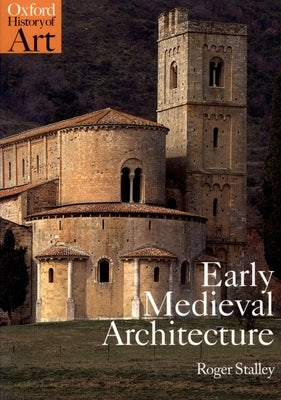Description
The early middle ages were an exciting period in the history of European architecture, culminating in the development of the Romanesque style. Major architectural innovations were made during this time including the medieval castle, the church spire, and the monastic cloister. By avoiding the
traditional emphasis on chronological development, Roger Stalley provides a radically new approach to the subject, exploring issues and themes rather than sequences and dates. In addition to analysing the language of the Romanesque, the book examines the engineering achievements of the builders,
focusing on how the great monuments of the age were designed and constructed. Ranging from Gotland to Apulia, Stalley explores the richness and variety of European architecture in terms of the social and religious aspirations of the time. Symbolic meanings associated with architecture are also
thoroughly investigated. Written with style and humour, the lively text includes many quotations from ancient sources, providing fascinating insight into the way that medieval buildings were created, and in the process enlivening study of this period.
Author: Roger Stalley
Publisher: Oxford University Press, USA
Published: 12/02/1999
Pages: 272
Binding Type: Paperback
Weight: 1.38lbs
Size: 9.38h x 6.60w x 0.68d
ISBN13: 9780192842237
ISBN10: 0192842234
BISAC Categories:
- Architecture | History | General
- Art | European
- History | Europe | Medieval
traditional emphasis on chronological development, Roger Stalley provides a radically new approach to the subject, exploring issues and themes rather than sequences and dates. In addition to analysing the language of the Romanesque, the book examines the engineering achievements of the builders,
focusing on how the great monuments of the age were designed and constructed. Ranging from Gotland to Apulia, Stalley explores the richness and variety of European architecture in terms of the social and religious aspirations of the time. Symbolic meanings associated with architecture are also
thoroughly investigated. Written with style and humour, the lively text includes many quotations from ancient sources, providing fascinating insight into the way that medieval buildings were created, and in the process enlivening study of this period.
Author: Roger Stalley
Publisher: Oxford University Press, USA
Published: 12/02/1999
Pages: 272
Binding Type: Paperback
Weight: 1.38lbs
Size: 9.38h x 6.60w x 0.68d
ISBN13: 9780192842237
ISBN10: 0192842234
BISAC Categories:
- Architecture | History | General
- Art | European
- History | Europe | Medieval
About the Author
Roger Stalley is Professor of the History of Art at Trinity College, Dublin. His previous books include Architecture and Sculpture in Ireland 1150-1350 (1971), The Cistercian Monasteries of Ireland (1987), Irish High Crosses (1991), and Ireland and Europe in the Middle Ages (1993). He has published
over fifty articles on various aspects of medieval sculpture and architecture. He is a member of the Royal Irish Academy and an Honorary member of the Royal Institute of Architects of Ireland.

